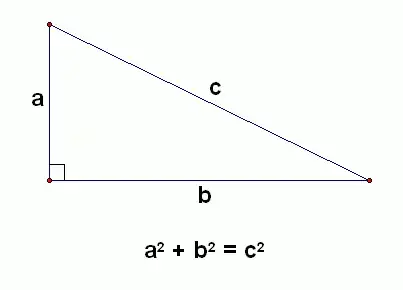You've hit on one of the fundamental "weirdnesses" of the Minkowski "metric". Its name "metric" is a bit misleading if you're a mathematician: it does not fulfil two out of the of the three axioms of the distance function defining a metric (in the topologist's words) space. There are null vectors, i.e. nonzero vectors $X$ for which $\langle X,\,X\rangle=0$ and it is NOT subadditive i.e. it does not fulfill the triangle identity. So the intuition you have from Euclidean (and general metric) space that the sum of the lengths of two of a triangle's sides must be longer than the third alone is WRONG!
The names "metric", "inner product" and "norm" in connexion with Minkowski spacetime reflects (1) the "structural" likeness that these operations as algebraic operations have to genuine metrics, inner products and norms (written on a page, they look a great deal like the genuine ones) and (2) the fact that many of the main theorems of Riemannian geometry also hold when we replace genuine inner products with nondegenerate ones (i.e. the matrix representing the two form is nonsingular) such as the Minkowski "inner product".
I recall many years ago reading Bert Mendelson in his wonderful introductory undergrad textbook "Topology" making the memorable and intuitive statement:
".... the [triangle] inequality $\mathrm{d}(x,\,z)\leq \mathrm{d}(x,\,y) + \mathrm{d}(y,\,z)$ may be thought of as asserting the transitivity of [the] closeness [relationship]; that is, if $x$ is close to $y$ and $y$ is close to $z$, then $z$ is close to $x$." (Chapter 2, Section 2, p 31 in my edition)
This wonderful statement - this transitivity - is precisely what is shattered in the twin paradox. The spacefaring twin at the halfway point ($y$) in his journey can be close to his beginning point ($x$) (he ages very little - the path has only short proper time), and at the end of his journey at ($z$) he can be near to his halfway point (again, he ages very little coming back), but ($z$) in spacetime is far, far away from ($x$): the Earthbound twin is now a decrepit, bent up old man.
PS if you study topology and they try to get you to read Munkres, I highly recommend Bert Mendelson's book to be read together with the heavier Munkres.
